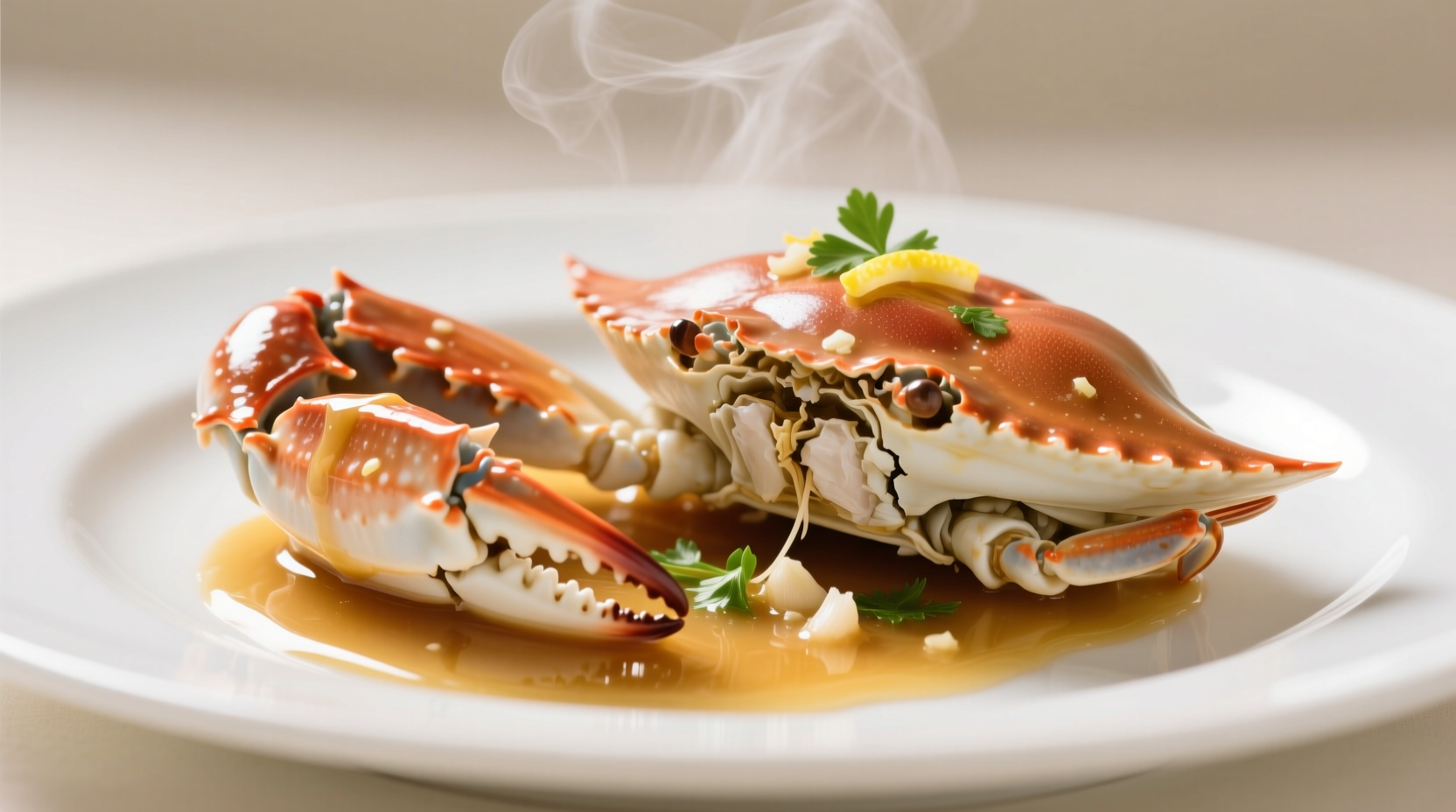Perfectly cooked crab legs with rich garlic butter sauce requires just 6 key ingredients, 15 minutes of active preparation, and precise steaming time to achieve tender, flavorful results without overcooking. This guide delivers professional techniques for extracting maximum flavor while maintaining food safety standards.
There's nothing quite like cracking open sweet, succulent crab legs bathed in aromatic garlic butter sauce. Whether you're preparing a special date night dinner or hosting a seafood feast, mastering this classic preparation elevates your cooking repertoire significantly. The magic happens when fresh crab meets the perfect balance of butter, garlic, and seasonings—creating a dish that's simultaneously simple and sophisticated.
Essential Ingredients for Authentic Flavor
Quality ingredients form the foundation of exceptional crab legs with garlic butter sauce. While frozen crab works in a pinch, fresh or properly thawed premium crab delivers superior texture and sweetness that complements the garlic butter perfectly.
| Ingredient | Quality Recommendation | Why It Matters |
|---|---|---|
| Crab Legs | King or Snow crab, fresh or properly thawed | Sweet flavor profile withstands bold garlic butter |
| Butter | Unsalted European-style (82% fat) | Higher fat content creates richer emulsion |
| Garlic | Fresh cloves, not pre-minced | Raw garlic burns; fresh provides complex flavor layers |
| Lemon | Freshly squeezed juice and zest | Bright acidity balances richness without vinegar sharpness |
Step-by-Step Cooking Process
Preparation Phase: Setting Up for Success
Begin by properly thawing frozen crab legs overnight in the refrigerator—never at room temperature. The FDA recommends keeping seafood at or below 40°F (4°C) during thawing to prevent bacterial growth. Place crab in a colander over a bowl to catch excess moisture, which would dilute your garlic butter sauce.
While your crab thaws, prepare your garlic butter sauce base. Melt 1 cup (2 sticks) of unsalted butter in a saucepan over medium-low heat. Add 6-8 fresh garlic cloves (minced), 1 teaspoon paprika, and ½ teaspoon cayenne pepper. Cook gently for 3-4 minutes until fragrant but not browned—burnt garlic turns bitter and ruins the delicate balance.
Cooking Phase: The Critical Timing Window
Steaming preserves crab's natural moisture better than boiling. Fill a large pot with 1 inch of salted water and insert a steamer basket. Bring to a rolling boil, then carefully arrange crab legs in the basket. Cover tightly and steam for:
- Snow crab: 4-5 minutes
- King crab: 6-7 minutes
- Dungeness: 5-6 minutes
Overcooking makes crab rubbery—a common mistake even among experienced home cooks. The USDA recommends cooking crab until the internal temperature reaches 145°F (63°C), but visual cues work better: the shell turns bright red and the meat becomes opaque.
Finishing Phase: Garlic Butter Integration
Remove crab from steamer and immediately brush generously with warm garlic butter sauce. The residual heat helps the sauce penetrate the cracks. For restaurant-style presentation, pour remaining sauce into a bowl for dipping alongside lemon wedges.
Avoiding Common Mistakes
Even seasoned cooks make these critical errors when preparing crab legs with garlic butter sauce:
- Overcooking - Crab continues cooking after removal from heat; remove 30 seconds before you think it's done
- Burning garlic - Keep butter temperature below 300°F (149°C); use medium-low heat
- Using salted butter - Makes seasoning unpredictable; control salt separately
- Skipping lemon zest - Contains essential oils that boost citrus flavor significantly
Serving and Pairing Suggestions
Serve crab legs immediately after cooking for optimal texture. Provide crab crackers, small forks, and plenty of napkins. Classic accompaniments include:
- Corn on the cob with herb butter
- Garlic roasted potatoes
- Simple green salad with light vinaigrette
For beverages, pair with crisp white wines like Sauvignon Blanc or unoaked Chardonnay. The wine's acidity cuts through the richness while complementing the seafood's sweetness.

Storage and Reheating Guidelines
Store leftover crab legs in an airtight container in the refrigerator for up to 2 days. Never leave cooked seafood at room temperature for more than 2 hours (1 hour if above 90°F/32°C) according to FDA safety guidelines.
Reheat gently to preserve texture:
- Place crab in steamer basket
- Add 1 inch water to pot and bring to simmer
- Cover and steam for 2-3 minutes until warmed through
- Brush with fresh garlic butter sauce
Microwaving makes crab rubbery—always use gentle reheating methods.
Variations for Dietary Preferences
Adapt this classic preparation for different dietary needs without sacrificing flavor:
- Dairy-free: Substitute butter with refined coconut oil and add 1 tablespoon nutritional yeast for richness
- Low-sodium: Use unsalted butter and enhance flavor with extra lemon zest and fresh herbs
- Spicy version: Add 1 diced jalapeño to garlic butter and finish with smoked paprika
Why This Method Works: Culinary Science Explained
The success of crab legs with garlic butter sauce hinges on understanding flavor chemistry. Garlic contains allicin, which develops fully when cooked gently in fat—this is why raw garlic doesn't work well in this application. Butter's milk solids caramelize at around 250°F (121°C), creating nutty flavors that complement seafood's natural sweetness.
According to research from the Culinary Institute of America, the ideal garlic-to-butter ratio for seafood applications is 1:8 by volume. Exceeding this ratio creates overpowering garlic flavor that masks the delicate crab meat.











 浙公网安备
33010002000092号
浙公网安备
33010002000092号 浙B2-20120091-4
浙B2-20120091-4